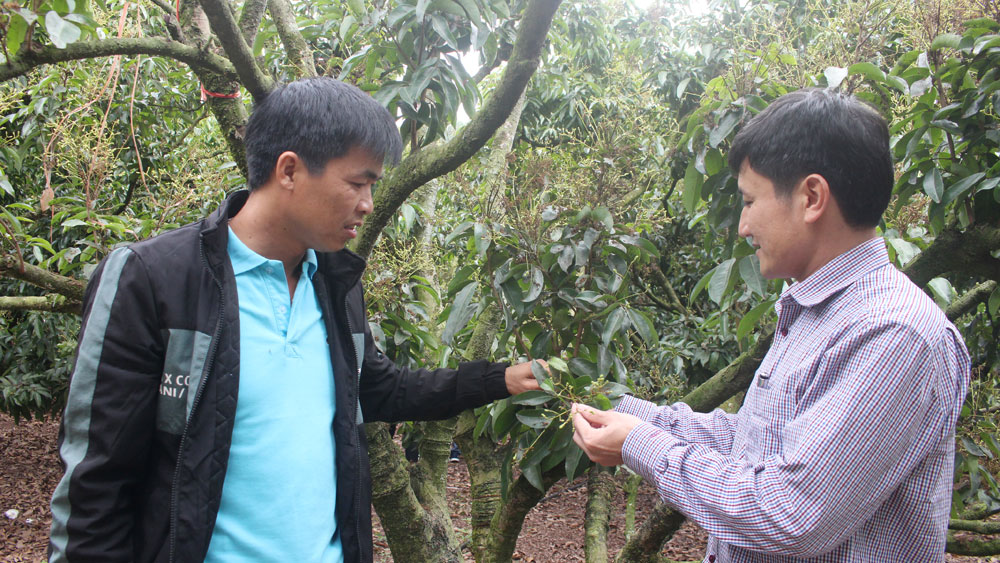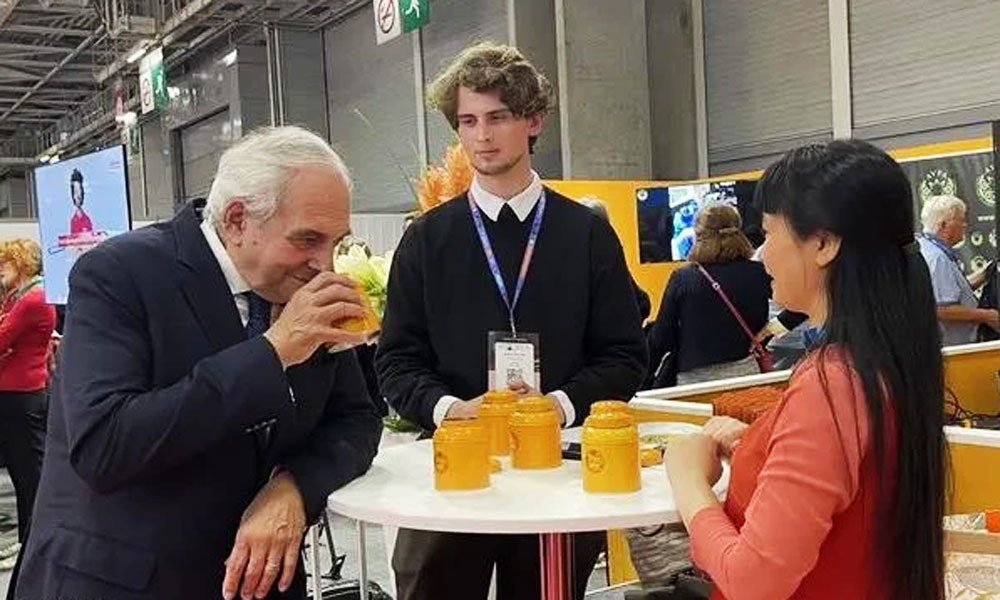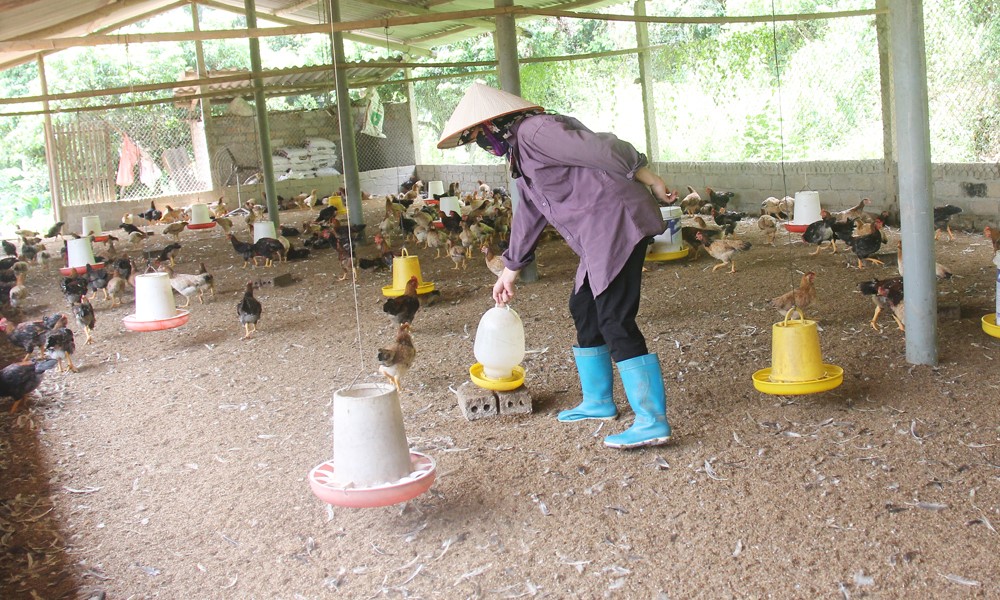Producing lychee for export: following production process, improving product quality
Accompanying lychee growers
On the morning of April 9, together with the professional staff of the Sub-Department of Cultivation and Plant Protection under the provincial Department of Agriculture and Rural Development and members of the team supporting lychee production for export to the Japanese market in Luc Ngan district, we went to Ho Dap commune - a locality with five growing area codes on 37 ha. In the lychee hills along the road in Na Hem, Cai Can and Hop Thanh villages, farmers are focusing on pruning lychee branches.
 |
|
Staff of the Sub-Department of Cultivation and Plant Protection instruct farmers in Ho Dap commune to take care of lychees exported to Japan. |
In the lychee garden of Lai Van Vien (born in 1985) in Hop Thanh village, after checking the care diary, the professional staff of the province and the district instructed him how to fertilize the trees for beautiful, sweet and uniform fruits.
According to the Department of Agriculture and Rural Development, this year, production of lychee in general and lychee for export in particular has received due attention. Welcoming the good news from the Japanese market, at the beginning of the year, the province had 11 growing areas granted codes, increasing the total number of lychee growing area codes for export to this market to 30 with a total area of 219.45 ha, involving 260 households. At the same time, the province continues to maintain production on 18 coded-granted areas with 218 ha for export to the US and EU markets.
In Luc Ngan district, for the first time the district People's Committee set up a 10-member team supporting farmers in producing lychee for export to Japan. In addition, the district's specialized agencies have encouraged households to apply technology in all stages of the production process and record the care diary... Similarly, in Tan Yen district, technicians have always stood "side by side" to provide technical support for growers.
Strictly complying with production process
According to the specialized agencies, lychee exports to Japan, the US and the EU see many advantages when businesses actively go to the gardens to purchase lychees, the harvest period shortens and people do not have to transport lychees to sell at purchase points. The prices of lychees exported to these markets are also 5,000-7,000 VND per kg higher than those sold to the Chinese and domestic markets.
However, to ensure the quality accepted by these markets, farmers need to strictly follow the production process and do not use pesticides that are not named in the list recommended by specialized agencies.
|
Japan is a demanding market. If Japanese partners find that lychees fail to meet the standards, they will immediately request a turn. The export (all agricultural products) will be suspended if we fail to meet the requirements for the second time and be stopped in case of the third time. |
Nguyen Thi Hien, head of the Material Department of the Ameii Vietnam Joint Stock Company (Hanoi city), said: “This year, we signed contracts with partners to export lychees to Japan with a volume of about 300 tonnes and possibly higher if the lychee quality meets the requirements. However, Japan is a demanding market, if Japanese partners find that lychees fail to meet the standards, they will immediately request a turn. The exports (all agricultural products) will be suspended if we fail to meet the requirements for the second time and be stopped in case of the third time. If it happens, it will not only cause damage to businesses but also make the lychee export path bumpier.”
In fact, to meet the requirements of the market, the Department of Agriculture and Rural Development is actively coordinating with the units and localities to guide farmers to apply science and technology in production, and work with other competent agencies to strengthen forecasting of the situation, and pest and disease prevention; as well as assist pesticide residue analysis before exporting.
 Bắc giang
Bắc giang
















Reader's comments (0)